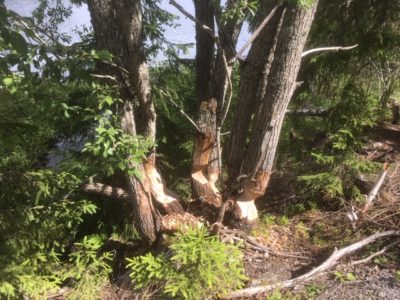After nearly becoming extinct in the late 1800s, Norway’s beaver population is now estimated to number more than 70,000. After making their mark in local forests around Oslo, some have even started moving into town, startling visitors to the Frogner Park and even residents of the city’s trendy Grünerløkka neighbourhood.

They’ve long been altering the landscape around lakes and the waterways of the Norwegian capital’s northern forest known as Nordmarka and the city’s eastern forest (Østmarka). They’ve been a protected species nationwide since 1898, when their numbers fell to only around 100, but they’re also a target of some debate because of the destruction they can cause.
“Few animals, with the exception of us humans, can reform a landscape to the degree the beaver can,” notes Bjørn Vassnes, who writes an ecology column for newspaper Klassekampen. “They not only can cut down trees over a wide area, they also can change the hydrologic balance of an ecosystem.”
Vassnes wrote last week that such activity can do nature a favour, by limiting how water runs “from clouds to the sea,” thus dispersing water and restricting flood damage while also adding to biological diversity. That’s made them popular with ecologists and environmentalists even though the visual results of beaver activity isn’t very pretty.

City officials in Oslo are both surprised and a bit anxious after beavers have been sighted this spring from the Frogner Park in the west to the banks of the Aker River that runs from Nordmarka right through the heart of town. Newspaper Aftenposten reported how tourists in the Frogner Park were startled to see a normally nocturnal beaver swimming around in the park’s creek that’s fed by underground tunnels at both ends.
Then came beaver sightings along the Aker River (Akerselva) right near the former Ringnes Brewery that’s now a housing and commercial complex complete with one of Oslo’s largest cinemas.
“This is rather fun and gives us an opportunity to see wildlife close at hand, in the middle of the city,” Terje Laskemoen of the city parks, recreation and environmental division (Bymiljøetaten) told Aftenposten.
“Seeing a beaver so far down the Aker River is suprising,” he added. “That another beaver made it all the way (from the forest bording the city) to the Frogner Park is very surprising.” Laskemoen stressed that it’s important for people to stay at a distance and show respect for Oslo’s latest arrivals.
Beavers are known to exist in populated areas, but problems can arise if trees start falling or if the beavers’ dams end up causing flooding instead of redirecting it. Laskemoen and his colleagues will be following beaver developments, and they may need to be captured and moved if they gnaw on too many trees in the park or along the river where people stroll as well. He said it “would be unfortunate” if the beavers start toppling trees.
“Beavers are usually afraid of people, though,” Laskemoen told Aftenposten. “I think they’ll end up leaving the park area pretty soon.”
newsinenglish.no/Nina Berglund

